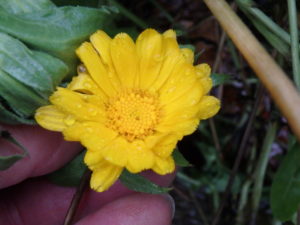Growing Plants Our Grandparents Grew
As we lurch toward spring, I spend time thinking about my garden: What will come through this hard winter? What needs to be replaced? What new plants do I want to try? One thing is certain. My grandmother’s peony will survive, and I will feel blessed by its beauty and fragrance in June.
My grandmother died in 1953, when I was seven. That fall my mom dug up grandmother’s favorite peony, one called ‘Festiva Maxima’, and brought it to my childhood home in Connecticut. Years later Mom suggested I dig up and divide my grandmother’s peony and bring a piece to Cornish Flat. I did that around 1984 and the peony is still going strong, nearly 35 years later. I love the connection it has to my mom, and to my grandmother and her gardens.
Plant breeders are constantly making efforts to introduce new varieties to the garden trade. Gardeners have long been traveling to far corners of the world to find new species that will make a hit. But there is something to be said about the old varieties and plants that have proven their worth over a hundred years or more. Here are some of my favorites.
Lilacs, the New Hampshire state flower, are an old favorite of mine. They’re not native here: they originated in Eastern Europe and temperate Asia. But they’ve been in America for hundreds of years. Skiing past cellar holes of abandoned farm houses I have seen lilacs that have survived with no care for decades.
Do your lilacs a favor later this spring by sprinkling a couple of quarts of wood ashes or limestone in a 5-foot radius around each. This will make the soil less acidic, which will increase the number of blossoms you get next year. This year’s buds are already in place, so blooming will not be affected.
I collect gardening books, and was recently perusing one called, “The Practical Flower Garden” by Helena Rutherford Ely, which was published in 1911. Ms. Ely said about her garden, “A long hedge of hydrangeas still remain, although I now exclude them from my vision, and regard them as if they did not exist.”
You may wonder why, pray tell, she shunned these plants? She explained, “These brave plants are so hardy and free-blooming that they have found a place from one end of the country to the other, and are grown everywhere, yet, because of their very merits which made them so universally grown, they have become distasteful to many.” Not me. I love hydrangeas.
The common orange daylily falls into the same category, I suppose. It’s indestructible, spreads by root and everyone has some – unless some ambitious gardener ripped them all out. I admit that I have dug out plenty of them in my day and replaced them with other perennials, including hybrid daylilies of other colors. My main objection is that, with time, they will take over beds and run out other plants. Still, I recognize that it is a good sturdy plant.
Some gardeners won’t give garden space to beebalm, another old favorite, though I love it. Yes, it spreads even faster than orange daylilies. But if it steps out of bounds, it pulls easily. If you leave some of the root in, of course, it will come back. My favorite weeding tool, the CobraHead weeder (www.CobraHead.com or 877-962-6272) does a great job of teasing out roots, so I have no problem with them.
Beebalm comes in several colors and all attract bees, butterflies, and hummingbirds. Two years ago I discovered a dwarf beebalm on the market. I believe the variety was called “Petite Delight”. It didn’t spread, and only grew about 12 inches tall. You might want to look for it this spring.
Then there are old favorites that as annuals, come back for me without any work. Calendula was grown by Thomas Jefferson. I have it free every year in my front walkway beds. I planted some years ago, and it self-sows every year, coming back in large numbers. It’s a yellow daisy-like flower that blooms well past frost.
Then there are annual poppies. I love them. Their seed pods contain hundreds of tiny seeds that they spill on the soil surface. I try not to disturb them when planting other things. I have them willy-nilly in the vegetable garden, adding color to lettuce and tomato rows.
Salpiglossis is an elegant old flower with a velvety texture and a range of colors, often in purple, red or mahogany with yellow stripes near the throat of the petunia-like blossoms. I first saw it at the Celia Thaxter garden on Appledore Island off the coast of New Hampshire. Preservationists have re-created her gardens, and they can be toured. She was a poet who lived from 1835-1894, and who loved flowers.
Salpiglosssi, also known as painted tongue, needs to be started indoors 8 weeks before last frost, and germinated in the dark. No lights. Then 16 hours of lights a day, with dark nights. Fussy. Some good nurseries will have seedlings for sale, which might be easier than starting your own. Or you can direct seed them outdoors in June.
So sit back and do some planning now, in mud season. But don’t just drool over pictures of new cultivars. Some of the old favorites are best.
Read Henry’s blog athttps://dailyuv.com/





